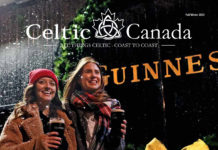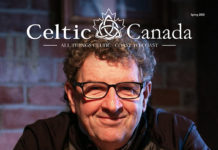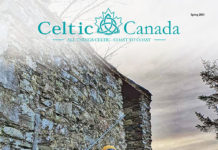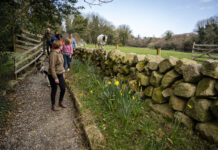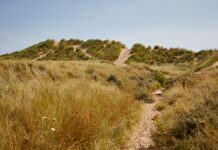A special cargo of bronze famine shoes left Galway May 2-2024 aboard the Marine Institute’s RV Celtic Explorer to cross the Atlantic to Newfoundland, Canada.
The shoe sculptures are a symbolic gesture to mark the launch of the Global Irish Famine Way and will be placed at key memorial sites in Canada.
The story of the famine shoes began with a pair found hidden in the thatched roof of a 19th century cottage.
Bronze replicas were cast and placed along the National Famine Way where almost 1,500 tenants walked from Strokestown in Roscommon to Dublin and set sail for Canada.
The Strokestown tenants were part of almost 100,000 people who fled the famine to Canada with over 8,000 perishing on coffin ships.
Now another collection of the bronze famine shoes will embark on a voyage to Canada.
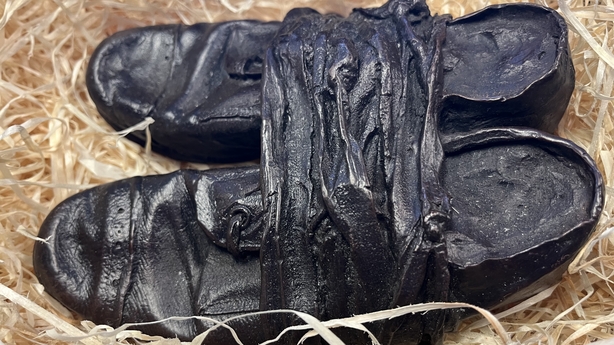
The event in the Galway harbour was attended by Professor Becky Whay, VP International at University of Galway, the Canadian Ambassador to Ireland Nancy Smyth and CEO of the Marine Institute, Dr Rick Officer.
Speaking at the handover of the bronze shoes to Captain Denis Rowan aboard the RV Celtic Explorer, Caroilín Callery of the National Famine Way said: “We are delighted and grateful to partner with the Marine Institute to have the bronze shoes brought on this leg of their journey to Canada.
“It is symbolic and important to us that their voyage mirrors the journey of the famine emigrants they represent – following the path they took in 1847.”
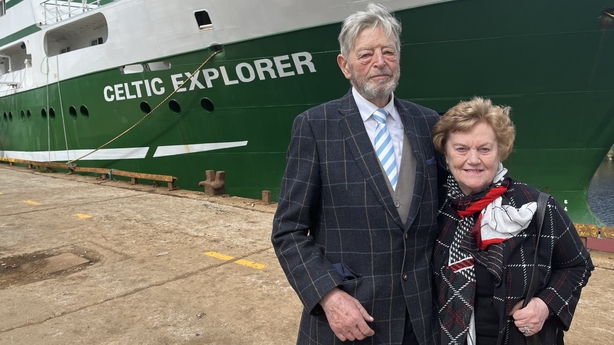
Ms Callery’s father Jim founded the National Famine Museum in Strokestown.
“Today was momentous because so many famine emigrants fled to Canada and were treated with compassion and kindness,” Mr Callery said.
“There are millions of Irish descendants there today and the expansion of the National Famine Way to worldwide communities will raise awareness of the historical significance of the Great Irish Famine and the diaspora abroad.”
As the Celtic Explorer prepares to lead a research expedition to the Labrador Sea, Dr Rick Officer, CEO of the Marine Institute, said it was an honour to take the famine shoes on this leg of their journey to Canada.
“This journey represents a powerful symbol of solidarity and remembrance, highlighting the enduring legacy of the Great Irish Famine and its impact on Irish communities around the world.,” Mr Officer said.
“It is fitting that the bronze shoes, a poignant symbol of our past, are now being carried on a journey aboard Ireland’s state of the art research vessel connecting history with the promise of tomorrow.”
The arrival of the bronze famine shoes in St John’s Newfoundland will be marked by the launch of the Global Irish Famine Way, the aim of which is to raise awareness about the historical significance of the Great Irish Famine and the enduring impact on Irish communities worldwide.
Crafted by artist Alannah O’Kelly, the shoes are said to symbolise the countless lives lost and the forced migration of Irish people during the famine.

Canadian Ambassador to Ireland Nancy Smyth said: “The decision to bring the bronze famine shoes to Canada underscores the shared history and cultural ties between Ireland and Canada, particularly the significant Irish diaspora in Canada.
“The journey aboard the national RV Celtic Explorer presents an opportunity to engage Canadian audiences in meaningful conversations about Irish migration, resilience, and commemoration.”
The Global Irish Famine Way is a collaboration between the embassies of Ireland and Ottawa and the National Famine Museum in Strokestown with academic experts, local community groups and heritage agencies including Parks Canada.
They say the reception the famine Irish received in Canada has a universal message resonant today -“offering hope through compassion and success through opportunity to the stranger on your shore”.
This Article first appeared on RTE – full credit: RTE




